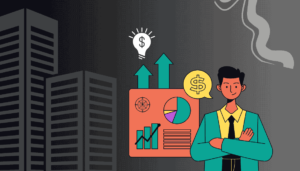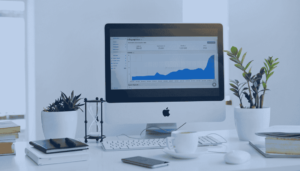
What’s the problem?
Whether you’re just starting your data analytics journey or looking to sharpen your skills, I’d love to connect and share insights. Follow me on LinkedIn to stay updated with the latest resources, tips, and step-by-step guides. Let’s grow together in the world of data!
Data Analytics FAQs
Data Analysis and Data Analytics
Have questions about getting started with data analytics, tools to use, or how to grow your skills? You’re in the right place. We’ve gathered the most frequently asked questions to help you learn data analytics with confidence, step by step.
What is data analysis?
Data analysis is the process of inspecting, cleaning, and modeling data to discover useful information, draw conclusions, and support decision-making. It involves examining data sets to identify trends, patterns, and relationships
How long does it take to see results from data analysis?
The time it takes to see results depends on the complexity of the data and the type of analysis. For simple projects, results may be visible within a few hours, while more in-depth analyses could take days or weeks. It also depends on the quality and size of the data you’re working with.
How can data analysis help my business grow?
Data analysis can help your business grow by uncovering insights that drive better decision-making, optimizing operations, and predicting future trends. By understanding customer behavior, market trends, and performance metrics, businesses can make informed decisions that enhance growth, efficiency, and profitability.
What tools do you use for data analysis?
We use a variety of tools to conduct data analysis, including:
Excel for basic data cleaning and analysis
Python (with libraries like Pandas, NumPy, and Matplotlib) for in-depth analysis and visualization
R for statistical analysis
Tableau and Power BI for data visualization
SQL for database querying These tools help us extract, manipulate, and visualize data effectively.
What is the difference between data analysis and data analytics?
While data analysis focuses on interpreting historical data to understand what happened in the past, data analytics goes a step further by using statistical methods and predictive techniques to forecast future trends and outcomes.
Can I learn data analysis without any prior experience?
Yes! Our resources and tutorials are designed for beginners. You can start from the basics and gradually build your skills through hands-on practice and real-world projects.
Do I need special software or hardware for learning data analysis?
You don’t need specialized hardware to start learning data analysis, but for software, you’ll need access to tools like Excel, Python (with an IDE like Jupyter Notebook), and R. We provide guidance on setting up everything you need, and many of the tools we recommend offer free versions.
Can I apply data analysis to any industry?
Yes, data analysis is applicable to nearly any industry! Whether you’re working in finance, healthcare, marketing, or tech, data analysis can help you uncover insights that improve decision-making and drive business outcomes.
How do I get feedback on my projects?
Once you complete a project, you can submit it through our submission portal. Our team will review your work, provide feedback, and help you improve your skills by pointing out areas for growth.
Can I collaborate with other students on projects?
While most of our projects are designed for individual work, we encourage collaboration. You can join our community forum to discuss ideas, share progress, and even collaborate on more complex projects.
Get in Touch to Learn Data Analytics With Me!
Ready to harness the power of your data? Reach out today to schedule a consultation or discover how our data-driven solutions can deliver real, measurable results for your business.
Explore Our Latest Blog Posts
Got more questions? Our blog dives deeper into the world of data analytics with hands-on tutorials, expert tips, and real-world examples. Check out our latest posts below, they might just answer your next big question!


